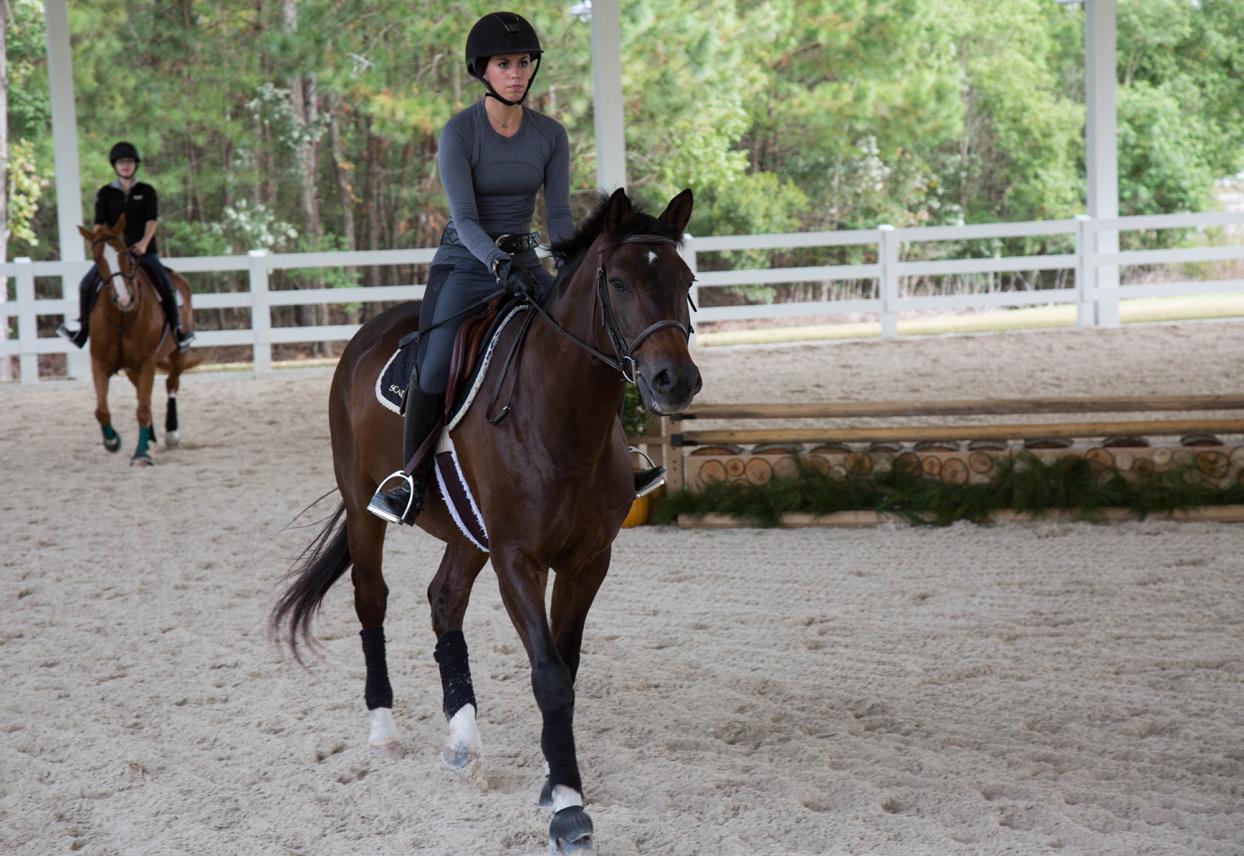
3 minute read
Equestrian Studies Q&A
Horses were sacred to ancient cultures like the Huns and the Indigenous people of the Great Plains; they were instrumental in the advancement of modern society, and they remain an integral part of national identity, especially in countries like Germany and Ireland.
The Oxford Dictionary definition of art is, “The expression or application of human creative skill and imagination to produce works appreciated primarily for their beauty or emotional power.” Riding meets all those criteria.
Advertisement
The art of horseback riding is not just the performance of a Dressage test or a show jumping round — which are works appreciated for the beauty and emotional power — it’s also the bond created between horse and rider. Horses are not clay, or paint, or music. They cannot be forcibly manipulated into exactly what a rider wants, but they can be influenced and molded into a partner.
Riding is a conversation, a constant cooperation between horse and rider where signals fly between the two in milliseconds. Every movement, every breath, every thought has meaning and consequence. Achieving true harmony with a horse — a living, breathing, independently thinking animal ten times a rider’s size and strength — requires patience, intelligence, perceptiveness, and definitely creativity and imagination.
So, you’re on the equestrian team?
The equestrian team is separate from the major. While there are several Equestrian Studies majors who are on the team, not all of them are. It’s also not a requirement that students are Equestrian Studies majors to be on the team. Any major can try out, and there are divisions specifically for riders with little to no experience.
What are you doing with your degree?
There are countless opportunities for work in the equine industry. Jobs span everything from training riders, horses, or both, to working at an organization like the United States Equestrian Federation. There are also retail and design opportunities with big companies like Smartpak and Ariat or smaller boutiques like EQUIS. EQUIS partnered with SCAD for a Collaborative Learning Center project last year and the team included three Equestrian Studies students.

Above: An example of a final project for the Facility Design class. Former student Giana Terranova also produced a website.
Left: Professor Kelly Theisen teaches a RIDE class.
Why are you studying horses?
Everyone is going to have a different answer to this question. Some Equestrian Studies students were born into the industry and want to continue the family business. Some grew up reading about horseback riding and want to pursue their dreams. Some have been riding for years and simply want to turn their passion into their career, as so many other SCAD students do. Regardless of specific circumstances or goals, all Equestrian Studies majors have a common motivation, a love for horses. The bond created between horse and rider is unlike anything else on earth. The equine industry is full of creative, motivated professionals who take pride in their work just as much as other artists do, so why wouldn’t students want to study horses?
Below: A project for the Principles of Equine Anatomy class. Students painted bones and muscles on horses. Photo Credit Rebekah Eubanks.
Bottom left: The Equestrian Studies program brings in experts like Kip Rosenthal to host clinics.
Bottom right: A riding lesson in the Shaw Pavilion, SCAD’s covered arena. Photo Credit Nikki Cramer.











